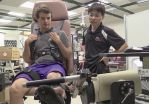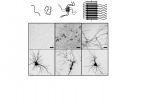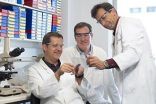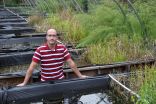Have our bodies held the key to new antibiotics all along?
2014-10-01
(Press-News.org) As the threat of antibiotic resistance grows, scientists are turning to the human body and the trillion or so bacteria that have colonized us — collectively called our microbiota — for new clues to fighting microbial infections. They've logged an early success with the discovery of a new antibiotic candidate from vaginal bacteria, reports Chemical & Engineering News (C&EN), the weekly newsmagazine of the American Chemical Society.
Matt Davenport, a C&EN contributing editor, explains that the human microbiota produces thousands of small molecules. Some have been discovered and tested, but by and large, very little is known about most of them. However, it could be well worth finding out more. Doctors are already prescribing pharmaceuticals based on small molecules made by exotic bacteria from the earth and sea, meaning our own microbes could be an untapped and accessible source of novel drugs. But rifling through all of the microbiota's natural products for a hit is like searching for a needle in a haystack.
To shrink that haystack, one team of scientists took a systematic, computer-assisted approach. They designed software to compare the microbiota's collective genes, or microbiome, against genes that are already known or suspected to play a role in producing small molecules that help keep microbes, and maybe their hosts, healthy. The team found more than 3,000 such gene clusters. One of those, from the vaginal bacteria Lactobacillus gasseri, contains the code for a small molecule that is very similar to a recently discovered antibiotic now undergoing clinical testing. When the scientists tested the Lactobacillus molecule in the lab, they found it attacked Gram-positive bacteria, some of which can cause human illness.
INFORMATION:
The American Chemical Society is a nonprofit organization chartered by the U.S. Congress. With more than 161,000 members, ACS is the world's largest scientific society and a global leader in providing access to chemistry-related research through its multiple databases, peer-reviewed journals and scientific conferences. Its main offices are in Washington, D.C., and Columbus, Ohio.
To automatically receive news releases from the American Chemical Society, contact newsroom@acs.org.
Follow us: Twitter Facebook
ELSE PRESS RELEASES FROM THIS DATE:
2014-10-01
Here's another reason why it's a good idea to hit the gym: it can improve memory. A new Georgia Institute of Technology study shows that an intense workout of as little as 20 minutes can enhance episodic memory, also known as long-term memory for previous events, by about 10 percent in healthy young adults (see a video demo).
The Georgia Tech research isn't the first to find that exercise can improve memory. But the study, which was just published in the journal Acta Psychologica, took a few new approaches. While many existing studies have demonstrated that months of ...
2014-10-01
Materials – Vehicle Lightweighting ...
For about the price of leather seats, automakers can trim approximately 362 pounds off the body and chassis of a midsize passenger vehicle, according to an Oak Ridge National Laboratory study. Researchers analyzed an array of materials – carbon fiber, advanced high-strength steel, aluminum alloys, magnesium alloys – that could replace steel. While the carbon fiber composite option reduced weight by 35 percent at an additional cost of $1,317, a combination of advanced high-strength steel and alloys resulted in a 25 percent weight ...
2014-10-01
Pity the poor lithium ion. Drawn relentlessly by its electrical charge, it surges from anode to cathode and back again, shouldering its way through an elaborate molecular obstacle course. This journey is essential to powering everything from cell phones to cordless power tools. Yet, no one really understands what goes on at the atomic scale as lithium ion batteries are used and recharged, over and over again.
Michigan Technological University researcher Reza Shahbazian-Yassar has made it his business to better map the ion's long, strange trip—and perhaps make it smoother ...
2014-10-01
People who are unable to button up their jacket or who find it difficult to insert a key in lock suffer from a condition known as apraxia. This means that their motor skills have been impaired – as a result of a stroke, for instance. Scientists in Munich have now examined the parts of the brain that are responsible for planning and executing complex actions. They discovered that there is a specific network in the brain for using tools. Their findings have been published in the Journal of Neuroscience.
Researchers from Technische Universität München (TUM) and the Klinikum ...
2014-10-01
Researchers have discovered a new type of brain activity that underlies the timing of voluntary actions, allowing them to forecast when a spontaneous decision will occur more than a second in advance. 'Experiments like this have been used to argue that free will is an illusion, but we think that this interpretation is mistaken,' says Zachary Mainen, a neuroscientist at the Champalimaud Centre for the Unknown, in Lisbon, Portugal, who led the research, published on Sept. 28, 2014, in the journal Nature Neuroscience.
The scientists used recordings of neurons in an area ...
2014-10-01
The peptide —a small protein— beta-amyloid is strongly associated with Alzheimer's disease; however, researchers are still looking for unequivocal proof that this peptide is the causal agent of the onset and development of the disease. The main obstacle impeding such confirmation is that beta-amyloid is not harmful when found in isolation but only when it aggregates, that is when it self-assembles to form the so-called amyloid fibrils
"We are not dealing with a single target, beta-amyloid alone, but with multiple ones because each aggregate of peptide, which can go from ...
2014-10-01
Current changes in the ocean around Antarctica are disturbingly close to conditions 14,000 years ago that new research shows may have led to the rapid melting of Antarctic ice and an abrupt 3-4 metre rise in global sea level.
The research published in Nature Communications found that in the past, when ocean temperatures around Antarctica became more layered - with a warm layer of water below a cold surface layer - ice sheets and glaciers melted much faster than when the cool and warm layers mixed more easily.
This defined layering of temperatures is exactly what is ...
2014-10-01
An international team of scientists has shown that more than 80 per cent of bowel cancers could be treated with existing drugs.
The study found that medicines called 'JAK inhibitors' halted tumour growth in bowel cancers with a genetic mutation that is present in more than 80 per cent of bowel cancers. Multiple JAK inhibitors are currently used, or are in clinical trials, for diseases including rheumatoid arthritis, psoriasis, blood cancers and myeloproliferative disorders.
Bowel cancer is the second-most common cancer in Australia with nearly 17,000 people diagnosed ...
2014-10-01
DURHAM, N.C. -- A Duke University team has found that nanoparticles called single-walled carbon nanotubes accumulate quickly in the bottom sediments of an experimental wetland setting, an action they say could indirectly damage the aquatic food chain.
The results indicate little risk to humans ingesting the particles through drinking water, say scientists at Duke's Center for the Environmental Implications of Nanotechnology (CEINT). But the researchers warn that, based on their previous research, the tendency for the nanotubes to accumulate in sediment could indirectly ...
2014-10-01
Computer modelling of the human eye, the brain of a rat and a robot could revolutionise advances in neuroscience and new technology, says a QUT leading robotics researcher.
Dr Michael Milford from QUT's Science and Engineering Faculty says the new study uses new computer algorithms to enable robots to navigate intelligently, unrestricted by high-density buildings or tunnels.
"This is a very Frankenstein type of project," Dr Milford said.
"It's putting two halves of a thing together because we're taking the eyes of a human and linking them up with the brain of a rat.
"A ...
LAST 30 PRESS RELEASES:
[Press-News.org] Have our bodies held the key to new antibiotics all along?





